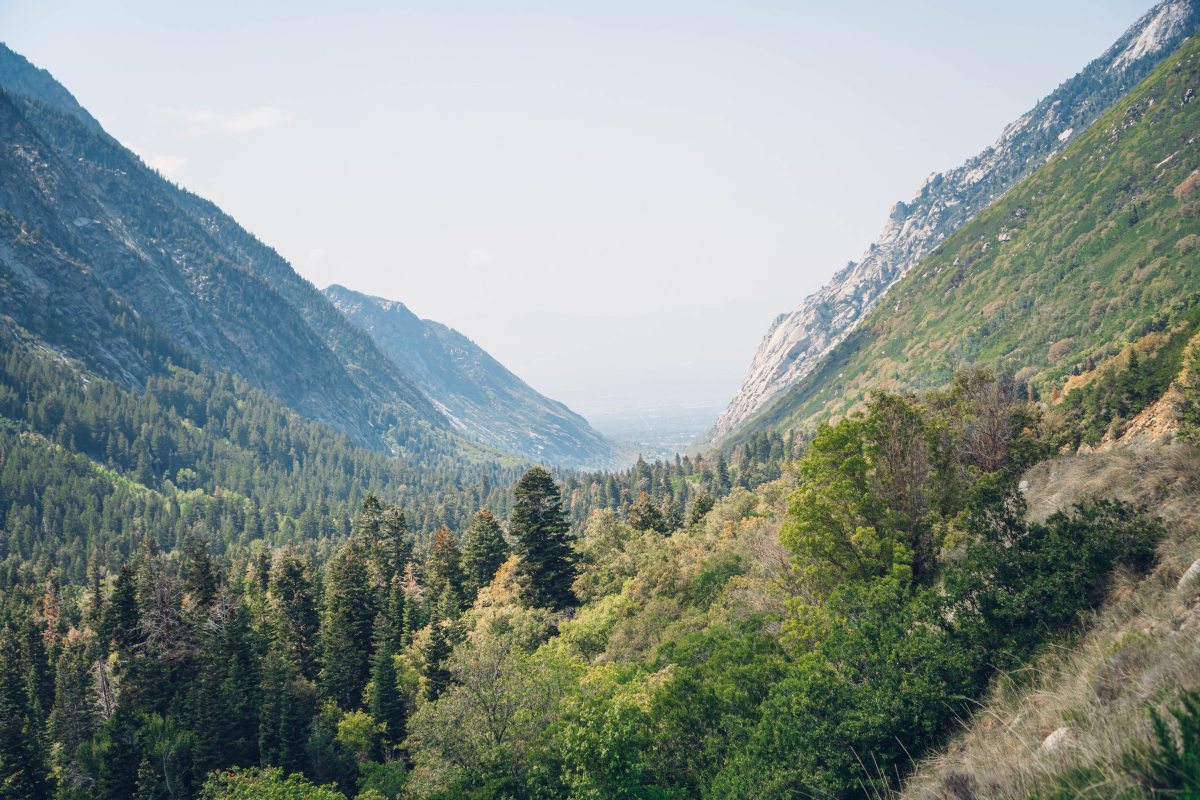On March 17th, the Utah Department of Transportation (UDOT) announced a new public comment period ending on April 18th regarding two new “Supplemental Information Reports” for the proposed gondola up Little Cottonwood Canyon (LCC), along with other Final Environmental Impact Statement (EIS) alternatives. The first report assesses whether the gondola would be exempt from the 2001 Roadless Area Conservation Rule (RACR) and its potential impacts on inventoried roadless areas. The second report provides another air quality analysis. Before submitting a comment to UDOT, it’s incredibly important to understand what a roadless area is, the history of the 2001 Roadless Area Conservation Rule (also known as the Roadless Rule), and the connection between the gondola in LCC and the Roadless Rule.
Check out the following interactive map to see how the proposed gondola system would pass through three roadless areas.
What are roadless areas and why are they important?
In 2001, the US Forest Service took inventory of roadless areas for their potential to be designated as an “Inventoried Roadless Area” (IRA). This designation prohibits road construction, road reconstruction, and timber harvesting in these areas. The Roadless Area Conservation Rule covers nearly 60 million acres of national forests, 4 million of which are in Utah’s national forests.
So how does a forest receive “inventoried roadless area” protections? It can be based on size (at least 5000 acres) or location (sharing a border with a Wilderness Area). Many popular areas in the Wasatch are protected under the Roadless Rule. If you’ve been to White Pine Lake, Rock Canyon, or Mount Timpanogos via the Timpooneke trailhead, you were trekking through protected roadless areas!
The Forest Service limited road construction in these areas because of its negative impacts, such as habitat fragmentation and degradation, reduced water quality for wildlife and human uses, increased erosion and slope instability, and increased human disturbances in remote areas (such as an increase in human-caused fires).
Little Cottonwood Canyon contains the White Pine IRA and portions of the Twin Peaks and Lone Peak IRAs. These areas provide important ecosystem services and recreation opportunities with limited to no permanent road disturbance. They are prime habitats for bears, elk, eagles, and other unique animal and plant species. In short, these roadless areas possess tremendous ecological and social value that are increasingly rare as the Wasatch faces rapid development.
What is the difference between inventoried roadless areas and Wilderness areas?
If you’ve been up Little Cottonwood Canyon, you may have seen the brown Forest Service signs for Twin Peaks Wilderness and Lone Peak Wilderness. This may lead you to question, what’s the difference between roadless areas and Wilderness areas?
Designated Wilderness areas receive the government’s highest level of land protection under the Wilderness Act of 1964. This Act created a National Wilderness Preservation System and sought to preserve areas where “the earth and its community of life are untrammeled by man, where man himself is a visitor.”
Inventoried roadless areas, on the other hand, are typically the undeveloped areas of national Forests that are either 5,000 acres or larger or bordering a Wilderness area. They provide clean drinking water and large, relatively undisturbed habitat for populations of threatened and endangered species. These areas preserve biological diversity and provide opportunities for dispersed outdoor recreation amidst a rapidly urbanizing landscape.
Before an agency can recommend an area of land to be designated Wilderness, it must first be inventoried roadless. So all Wilderness areas are roadless, but not all roadless areas are Wilderness. For example, Twin Peak, Lone Peaks, and Mount Olympus are all designated Wilderness areas AND protected by the Roadless Rule, whereas White Pine is not a designated Wilderness area but is still protected by the Roadless Rule.
Why did UDOT release additional reports and open another comment period?
During the EIS process, UDOT failed to fully examine the impacts of the Roadless Rule. The proposed gondola system would situate towers, angle stations, snowsheds, and the clearing of vegetation within one of the Wasatch’s most protected areas, impacting not just one, but three roadless areas in Little Cottonwood Canyon: Twin Peaks, Lone Peak, and White Pine Roadless Areas.
UDOT claims the construction of a gondola is exempt from the Roadless Rule because it isn’t a road for motor vehicles, and that any associated timber cutting and removal would be incidental. It says the snowshed may be exempt because it would promote safety against avalanche hazards. The Forest Service will make the final decision in its Record of Decision for the SR210 (road going up LCC) project.
The process that UDOT is undertaking is a National Environmental Policy Act (NEPA) process and involves transportation analysis for the SR210 highway. Even if the gondola system isn’t defined as a road, it would be built for highway purposes and is thereby inconsistent with the Roadless Rule and the 2003 Wasatch-Cache National Forest Plan.
The roadless rule, in contrast with the Wilderness Act, allows for some types of disturbances. However, we believe it is a poor interpretation that is likely to be challenged to suggest the gondola system (towers, snow sheds, angle stations and timber removal) is exempt from the Roadless Rule. These areas have environmental values (e.g. watershed, views, dispersed recreation, timber, vegetation, and habitat) that are mandated to be protected under Roadless Rule and are inherent to Little Cottonwood Canyon, which UDOT’s preferred alternative would destroy.
Learn more:
 Comment to UDOT on Roadless Rule Supplemental Information Report (March 2023)
Comment to UDOT on Roadless Rule Supplemental Information Report (March 2023) - Forest Service Inventoried Roadless Areas (IRAs)
- This isn’t the first time the roadless rule has been challenged in Utah. Learn about the state of Utah’s 2018 petition to manage roadless areas. State of Utah's 2018 petition to manage roadless areas
- Interactive LCC Gondola Visualization
- UDOT's Supplemental Information Report: Assessment of the Roadless Area Conservation Rule for the Final EIS Alternatives
- 2003 Forest Plan for the Wasatch-Cache National Forest


